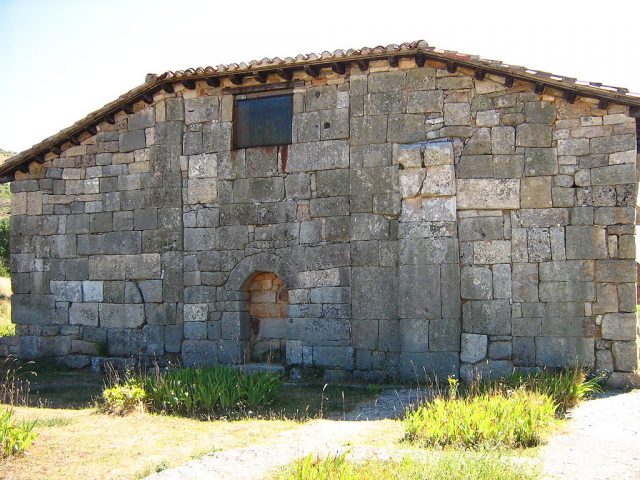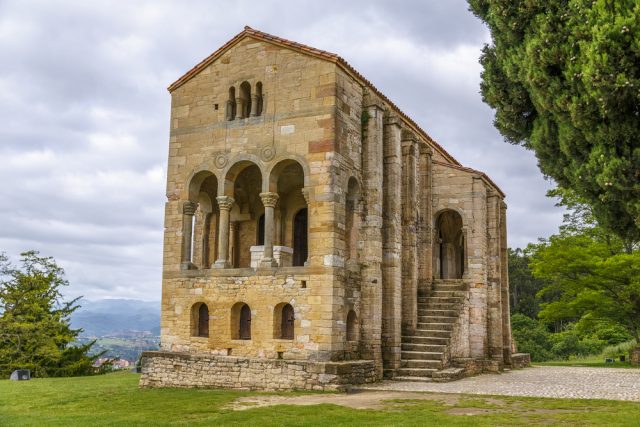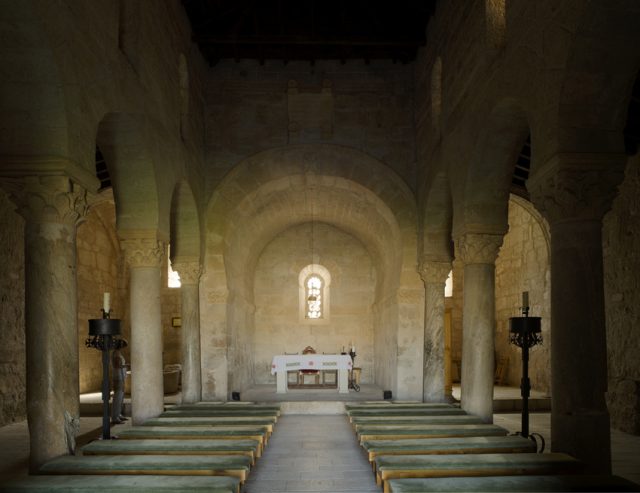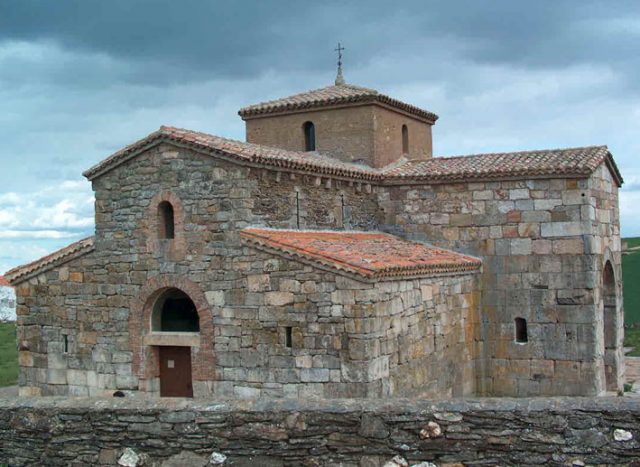 Real Academia de Bellas Artes de San Fernando
Real Academia de Bellas Artes de San Fernando
The Visigoths were among the Germanic tribes that sacked imperial Rome in the early 5th century and came to hold sway over significant swaths of what is today Italy and especially southern France. Pushing south over the Pyrenees into the Iberian Peninsula later that century and then converting to orthodox Roman Catholicism, various Visigothic and Ostrogothic rulers with names like Leovigild, Reccesuinth, and Wamba (top) became the successors to the Roman Empire throughout Iberia, holding sway here throughout nearly three centuries – with endless complex maneuvering, intrigue, succession disputes, rebellions, and conquests along the way, of course. Good times…
Anyway, after Muslim invaders swept up from North Africa in 711-716 AD and conquered the vast bulk of Visigothic Spain except for far-north Asturias, the Visigoths – gradually assimilating with the local population – were left more or less free to practise their faith, and in a real sense came to left their mark upon Iberia’s religion and other culture, not to mention the gene pool. They thus came to form an important part of the emerging Christian kingdoms of the Middle Ages as the Muslim Moors were finally pushed out of Iberia.
These days, not too much is left of the Visigoths’ material legacy, and that’s one reason why their dominion is often overlooked in the grand sweep of Spain’s history. Nonetheless, intriguing bits and pieces – some artifacts and the occasional church – can still be divined in these seven Spanish spots:
 jethrothompson
jethrothompson
Burgos
In the village of Quintanilla de las Viñas, just over a half hour’s drive southeast of the heart of Castile-León, Burgos, the Santa María de Lara Hermitage is one of Iberia’s only surviving Visigothic churches, believed to date back to the 7th century. Visible only from the outside, the squat, primitive stone structure includes typical Visigothic features like a horseshoe arch, and also has an unusual triple frieze of bas reliefs on its outer walls.
Madrid
Spain’s capital was of course not founded till many centuries after the Visigothic era. But one of its excellent museums, the Museo Arqueológico is a good place to see some of Visigothic Spain’s most impressive treasures, such as a crown from the Treasure of Guarrazar (a collection of votive crowns and crosses from Visigothic Toledo, see below), as well as various buckles, jewelry pieces, and ceramics.
 KarSol
KarSol
Mérida
In the capital of far-west Extremadura, not only does the Moorish fortress Alcazaba incorporate some carved Visigothic pillars, but there’s also a part of the Roman art museum devoted to the Visigoths. Located in the Baroque Convento de Santa Clara, it displays an impressive variety of statues, columns, carvings, and pottery.
Oviedo
Although most of Visigothic Spain was wiped out by the Muslims in the early 8th century, Visigothic nobility under King Pelayo revolted against the invaders in 722 and established the kingdom of Asturias, whose pre-Romanesque style drew heavily from Visigothic architecture and motifs. Its most evocative example is Santa Maria del Naranco, a UNESCO World Heritage Site built as a recreational palace in 848 on a hill above Asturian capital Oviedo.
 PMRMaevaert
PMRMaevaert
Palencia
Just 15 minutes south of the Castille-León city of Palencia, in the village of Baños de Cerrato, the three-nave church of San Juan Bautista (St. John the Baptist, above) is thought to be Spain’s oldest surviving from the Visigothic era, commissioned by King Recceswinth in 661 when the local waters supposedly cured his battle wounds; nearby is a cemetery with 58 tombs. Back in the city of Palencia itself, at the Gothic cathedral you can also visit a crypt from the Visigothic era.
Toledo
This venerable Old Castile city became “Holy Toledo” – key to three of Spain’s cultures/ religions/civilisations (Islamic, Jewish, Christian) – largely thanks to the fact that under the reign of King Leovigild (568-586 AD), it became the capital of the Visigoths. Sadly, almost nothing of them remains here today, but there is a small, relatively simple Museum of the Councils and Visigothic Culture on Plaza San Román. Housed in a 13th-century Mudéjar church (built by Moorish artisans in Islamic-flavoured style after the Christian Reconquest), it includes sarcophagi, columns, artwork, and jewelry along with other artifacts (unfortunately, explanations are in Spanish only).
 AnTeMe
AnTeMe
Zamora
One of the last remaining examples of purely Visigothic architecture, San Pedro de la Nave in the Castile-León town of Campillo (a half hour northwest of Zamora city) dates back to between 680 and 711, the reign of King Ergica. Still a functioning Catholic church, its interior decoration is perhaps the richest, with a frieze and column capitels depicting various flora and fauna, along with human figures and biblical scenes such as Daniel in the lion’s den and Abraham’s would-be sacrifice of Isaac.
https://youtu.be/5QlrpWDW-y8

